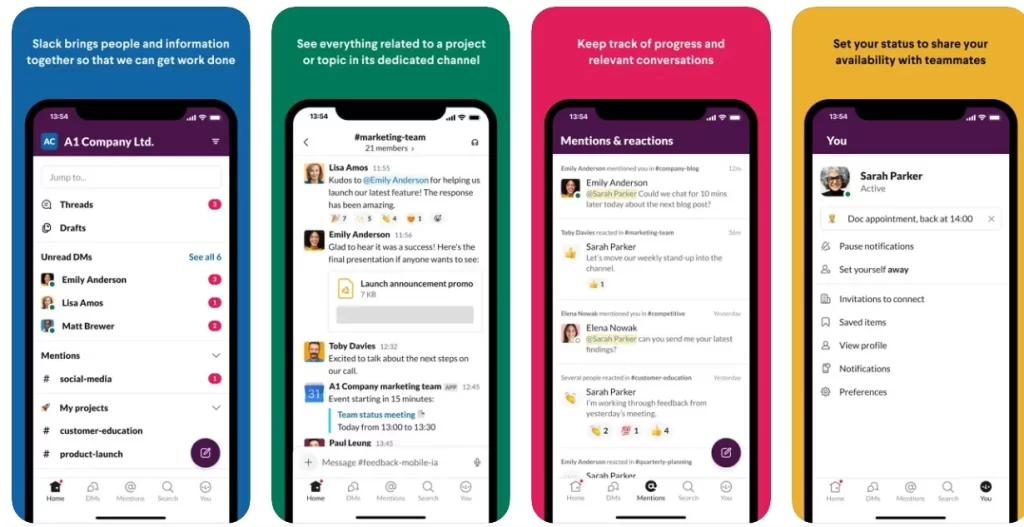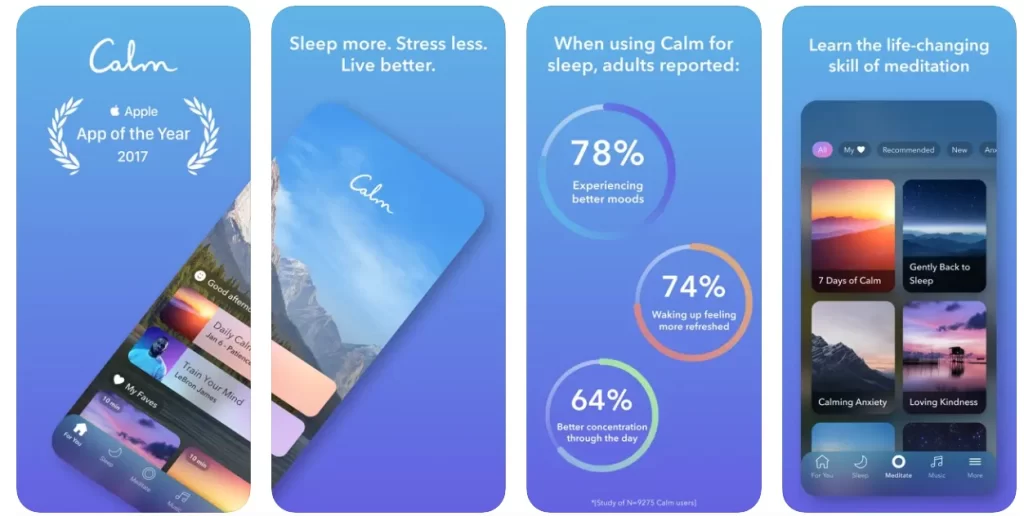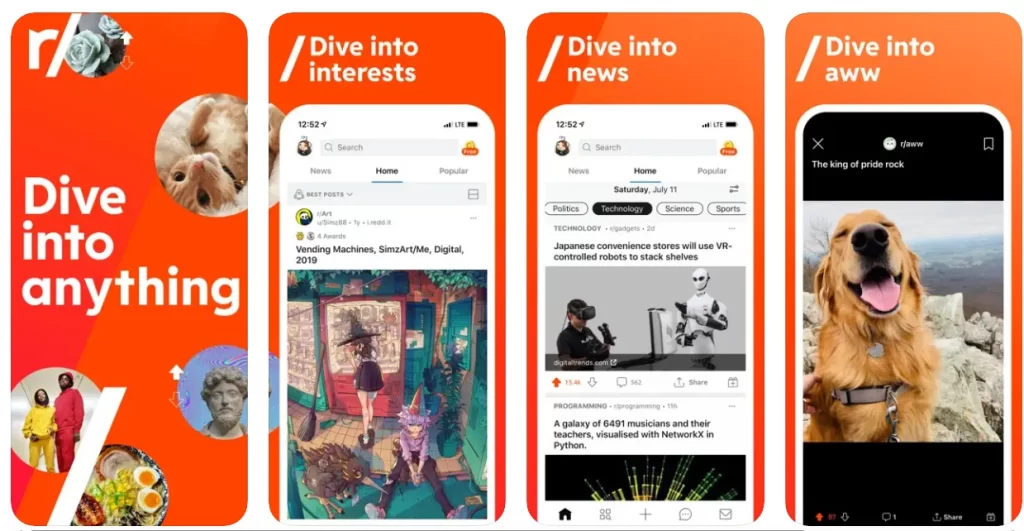
Everyone strives for their mobile app to be initiative and user-friendly. Numerous ways exist that can help enhance the user experience for mobile apps.
Mobile app onboarding is one aspect that fosters user engagement and interaction with mobile apps. App developers can drive retention, adoption, and success by investing in a user-centric onboarding experience.
Let’s understand the mobile app onboarding and best practices to implement, which can lead to user adoption, engagement, and overall satisfaction with mobile apps.
What Is Mobile App Onboarding?
A process comprises a series of steps new users must take to use an app. The process includes a guide on how to get started, collecting user info such as email address, user name, onboarding guide, etc.
Consider mobile app onboarding as a walkthrough process or a tutorial that helps users interact with the app and informs them about it, including its features and functionalities.
Why Is Mobile App Onboarding Important?
The process helps app developers to achieve the following objectives.
Set up: The process helps users to set up their account via registration on the app by submitting details such as e-mail address, username, etc.
To Educate: App onboarding helps users understand the app’s benefits, features, and functionality.
Data collection: Collecting user data is crucial for an app to create an account and help them offer personalized user experience through notifications and recommendations.
Types Of Mobile App Onboarding
The process comprises three essential categories:
1. Progressive
Progressive onboarding simplifies the complex workflows in the app by including gesture-driven interactions and guides that illustrate the essential onboarding steps.
A series of information in progressive-based mobile app onboarding inform users about step-by-step processes for directing them and encouraging them to take action.
2. Function Oriented
The function-based approach is heavily focused on explaining with app’s functionality and operation. This approach is based on operations that users can take to access the app’s features and functionality.
The approach, also known as instructional-based, explains to users how to use the app through a demo video that illustrates the functionality of an app’s UI.
3. Benefits Oriented
The approach highlights the app’s benefits to users. The main goal of benefit-oriented approaches is to boost the conversation rate by encouraging users to use an app. Additionally, the approach explains the following things to users:
- What does the app do?
- How can users integrate app benefits into their life?
- What values will the following integration provide to their life?
Core Elements Of Mobile App Onboarding
The mobile apps with the best onboarding processes incorporate the following core elements:
1. Welcome
Your welcome screen will create the first impression of your app. Try to induce a friendly message, emoji, or gifts that can help you align with your brand identity. However, ensure that the welcome screen will only appear for the first time to new users not registered with your app.
2. Feature Promotion
App onboarding offers a great opportunity to highlight your app’s core features and benefits. Highlighting app features will help you connect with your users and explain product functionality to them before creating an app account.
3. User Set-up And Personalization
The app onboarding can also collect information from app users and utilize them to personalize their app experience. Moreover, you can provide users with many options to let them customize their experience during onboarding.
4. Helpful Resources
If your app is more complex and consists of more technical elements, it is good to have helpful resources, references, or materials during the onboarding process.
Instead of helpful resources, you can Implement a user guide that can help users navigate to contact support, FAQ section, or other places in your app where you can help them resolve their basic queries.
Benefits Of App Onboarding
The process delivers the following advantages:
1. Positive User Experience
The first user interaction is essential in finding whether the user will use your app. Therefore, delivering the best app experience is a must to ensure the success of your app.
With the mobile app onboarding process, you can guide your users about how to use the app and highlights important details that must be known.
2. App Features & User Engagement
Sometimes users cannot familiarize themselves with the valuable features of an app. Therefore, highlighting certain features during app onboarding is a great way to generate user engagement.
3. Increases App Retention
Mobile app retention is another benefit that comes with mobile app onboarding.
Many can understand the benefits of using your app by illustrating all the core features and functionalities to mobile app users. App benefits will encourage them to continue using your app for a long time, thus helping you improve your app’s retention.
Best Practices For Mobile App Onboarding
Here are the top app user mobile onboarding best practices you can implement in your apps
1. Prioritize The Value Proposition
Illustrate the benefits of using your app to your users. This will encourage them to use your app and assure them that it is useful and serves what it claims.
A value proposition is a way by which you can highlight the benefits and core features of your app.
2. Only Ask For Mandatory Information
A seamless onboarding experience ensures your app users won’t leave your platform midway through signup.
Avoid asking too much unnecessary personal information, as reports suggest that almost 60% of users do not install the app or uninstall it if they are bombarded with excessive questions during sign-up.
Try to make your questions as clear and concise as possible to avoid confusing your users during the onboarding process.
3. Implement Compact Onboarding Screens
An extremely lengthy onboarding process can overwhelm users, which might force them to leave your app in the first place.
Implementing compact onboarding screens is a way to generate a clear message among your app users regarding app features and benefits.
The best way to generate engaging onboarding screens is to bring up tutorial videos and gamification during onboarding.
Also, introduce a single feature on each screen that can help your users to understand how your app works and how it can benefit them.
4. Offer A Simple Sign-Up Process
The lengthy signup process may take away user interest in using your app. Therefore, there is a need to offer an alternative way to for enabling quick registration to your app.
Try to implement social media integration to your app so your users can create their accounts in a few clicks by allowing your app to access their social media details such as e-mail address, username, etc.
5. Request For Permissions
Taking users’ permission to access their data and information is an important part of business ethics.
Moreover, if you need to access a smartphone’s hardware, such as a microphone or camera, you must ask permission to grant access.
Letting users know all required information and hardware will help you create and maintain their trust in your platform. Additionally, users will respond positively as they will understand how their data will help them get a personalized experience on your app.
6. Promote App Content Preview
An act of marketing or advertising the app’s features. The practice involves highlighting the benefits and values that users can gain with the app. The app content preview generates awareness and interest among users and encourages them to download the app.
Promoting app content review is one of the best onboarding practices as it acts as a barrier between your app and the user. The promotion can be practiced through various channels, including app screenshots, social media campaigns, e-mail newsletters, website banners, and in-app notifications.
7. Utilize Empty States
Empty stats can be considered screens where users do not perform any activity. These empty screens can be utilized as educational materials for encouraging users to take reasonable actions on your app.
For example, you may have experienced that Instagram displays “No post yet” instead of just leaving it blank. This encourages users to initiate any action and extend the further usage of an app.
8. Offer Visual Hints For Guidance
Strategically placing visual hints can help your app users continue the app onboarding process simply and clearly.
Implementing visual hints can help users to avoid tedious and monotone instructions and can consume that time for exploring all the features and functionalities of your app.
Try to place hints to the places where you think your app users might get stuck while accessing your app.
9. Preach Personalization
A personalized app experience is a great way to generate engagement on your app.
At the time of mobile app onboarding, allowing users to choose from multiple options can help you offer them a great personalized experience. You can allow them to choose from different options such as language, content categories, theme, etc.
10. Implement Success States
Success states are a great way to leverage user engagement on your app. These states are animations that congratulate users when they complete an action for the first time.
Strategically placing success stats on different onboarding screens will also help users confirm whether they have completed a particular task.
11. Try gamification
Gamification is a strategy that incorporates gaming mechanics and elements during user onboarding. The main aim of gamification is to provide app users with an engaging and enjoyable onboarding experience.
Moreover, gamification provides valuable data and insights into user behavior and interactions with onboarding progress.
The developers can utilize this gamification data to further improve the onboarding process by identifying areas of improvement and making them interactive, rewarding, and engaging at the same time.
12. Describe Actions
A clear explanation of actions users must take is the best way to simplify the app onboarding process.
Therefore explaining the most well-known actions to users is crucial to help users to understand them for completing the app onboarding process.
13. Test Before Final Implementation
The app can be considered remarkable when it is perfect overall, including a smooth onboarding process.
Testing the user onboarding flow for your mobile app across different screens and monitoring them is crucial to ensure smooth transitions and seamless operation between each screen.
14. Include Multiple Channels
Another way to enhance the effectiveness of your app onboarding procedure is to retain your app users.
Consider utilizing multiple channels like push notifications, emails in-app, and messages to remind users to complete the required actions that they have left incomplete.
For example, in e-commerce apps, you can remind users to complete the purchase for the product they have left on their “Wishlist” or “Add to cart.”
15. Monitor And Track (liquid state)
App analytics is an incredible way to determine user challenges during onboarding. This problem provides insights into where you can bring improvement for simplifying the app onboarding experience for your users.
16. Provide CTA
CTA stands for Call to Action, an essential aspect of mobile app onboarding. A well-designed CTA will encourage users to take necessary actions on your app, such as registration, making payments, etc.
17. Offer The Choice To Skip
App onboarding is necessary for effectively introducing the app to your users.
However, many users prefer to skip the whole app onboarding process. Therefore, facilitating your app users with an option to skip the onboarding process can improve your app’s reputation.
Examples Of Great Onboarding Practices
Explore the applications that have implemented great onboarding practices:
1. Slack

The app is well suited for large-scale and small-scale enterprises to facilitate communications among their team members. The Slack app follows value-oriented onboarding practices where they walk through users with screens to explain how to establish communication and share data among their teams.
| Founded in | 2009 |
| Available on | Web, Linux, Windows, MacOS, Android, iOS |
| App downloads | 10M+ |
| App rating | 3.6 |
| Founders | Stewart Butterfield, Cal Henderson |
| Headquarters | Vancouver, Canada |
2. Calm

A popular meditation app helps users tackle common health issues such as irregular sleeping patterns, anxiety, stress, etc.
When considering the onboarding practices of the Calm app, its onboarding screen first familiarises its users with its features and value propositions, such as breathing programs, sleep stories, guided meditation, and much more.
| Founded in | 2012 |
| Available on | Web, Linux, Windows, MacOS, Android, iOS |
| App downloads | 50M+ |
| App rating | 4.5 |
| Founders | Alex Tew, Michael Acton Smith |
| Headquarters | San Francisco, USA |
3. Reddit

Reddit is among the most popular Q&A platforms where thousands of communities discuss different topics. The platform provides a “Skip for now” option for its onboarding process to allow users to skip the account creation process. Moreover, the platform also asks permission to send users notifications.
| Founded in | 2005 |
| Available on | Web, Android & iOS |
| App downloads | 100M+ |
| App rating | 4.3 |
| Founders | Steve Huffman, Aaron Swartz, Alexis Ohanian |
| Headquarters | Massachusetts, USA |
Conclusion
A successful user-app relationship can be established with a well-crafted onboarding process. The process leads to user engagement and satisfaction by introducing them to the valuable features of apps.
Employing a reliable app development company is a way to incorporate a well-crafted app onboarding process into your app.
Contact Idea Usher if you are seeking to enhance the mobile app onboarding process.
You can leverage our expertise from app development to mobile app onboarding to deliver an exceptional experience to your users. Contact us today to learn more about app development services and how we can help you with mobile app onboarding.
Contact Idea Usher
Email:
Phone:
FAQ
Q. How do you create a good onboarding experience for an app?
A. A great onboarding experience can be done by following essential steps such as highlighting core features, emphasizing value proposition, simplifying the sign-up process, including gamification, etc.
Q. What are the 4 C’s of onboarding examples?
A. Compliance, Clarification, Connection, and Culture are the 4 C’s of onboarding examples.
Q. What are the components of an onboarding screen?
A. Welcome screen, feature promotion, helpful resources, and personalization are some of the essential components of an onboarding screen.









Gaurav Patil